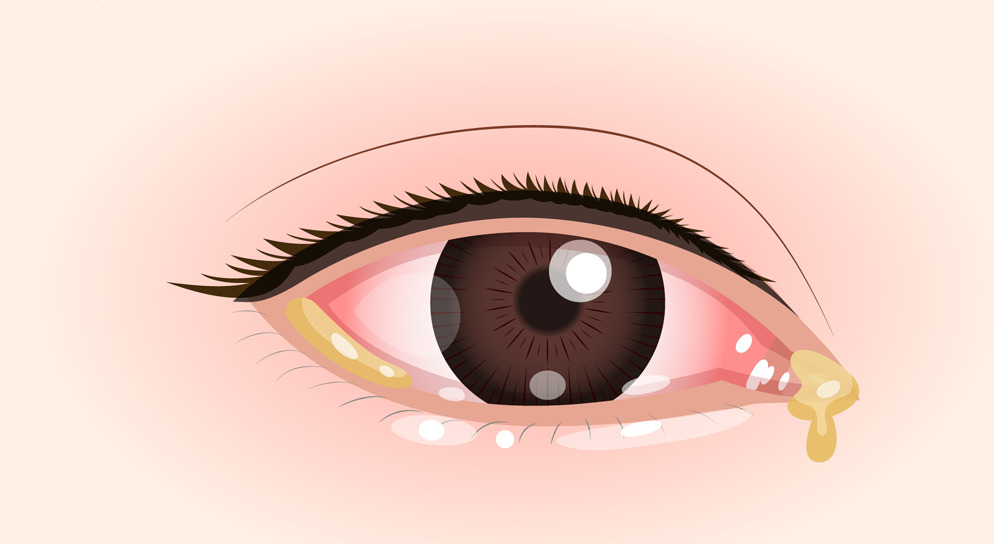Eye Clinic Tokyo has prepared content that will help you to understand various eye diseases.
This time, it’s about conjunctivitis.
■Conjunctivitis
【disease】
Conjunctivitis is an inflammation of the transparent membrane that lines the eyelid and eyeball. The membrane is called the conjunctiva.
Conjunctivitis can be mainly divided into Infectious Conjunctivitis and Allergic Conjunctivitis. Infectious Conjunctivitis can be roughly divided into Viral Conjunctivitis caused by virus infection and Bacterial Conjunctivitis caused by bacteria infection.
◎Bacterial Conjunctivitis
【Causes】
Bacterial Conjunctivitis is caused by bacterial infection. The main pathogenic bacteria are Haemophiles influenzae, pneumococcus or Staphylococcus aureus. Because the infectivity is not strong, the risk of infection is not high, but it is easy for children to be infected when their eyes are injured or when the body’s resistance drops due to the disease.
【Symptoms】
Symptoms such as redness, eye mucus and foreign body sensation may appear.
【Treatment】
It is basically treated with antibacterial eye drops. According to the type of pathogenic bacteria, antibacterial eye ointment and antibacterial oral medicine may also be necessary. If treated properly, it can be cured in about 1-2 weeks.


◎Viral Conjunctivitis
【Causes】
Viral Conjunctivitis is caused by viral infection. Most cases of viral conjunctivitis are caused by adenovirus. We should pay attention to the viral conjunctivitis because adenovirus is very contagious, and it is often transmitted from person to person. The representative viral conjunctivitis are epidemic keratoconjunctivitis (pink eyes) and pharyngeal conjunctival fever.
The incubation period is about 1 week. It is strongly infectious from 3 days before symptoms appear to 2 weeks after onset.
【Symptoms】
Symptoms such as strong redness, eye mucus, foreign body sensation and preauricular lymph node tumefaction may appear. Pharyngeal conjunctival fever is accompanied by fever and sore throat. In severe cases, there will be a false membrane, which is a white membrane, and small turbidites (corneal turbidity) in the black eyes.
【treatment】
Although at present, there is no effective medicine for adenovirus, non-steroidal anti-inflammatory eye drops, and steroid eye drops with anti-inflammatory effect are used to relieve discomfort. In addition, to prevent the conjunctivitis from bacterial infection due to the decreased body resistance, there are also cases of preventive use of antibacterial eye drops. Symptoms will gradually subside with the increase of the body’s resistance to viruses, and the viral conjunctivitis can be cured in about 3 weeks to 1 month.
◎Allergic Conjunctivitis
【Causes】
Pollen and other allergens (substances causing allergic reactions) are attached to the surface of the eye, which can cause conjunctiva inflammation. The allergic conjunctivitis can be divided into seasonal allergic conjunctivitis (symptoms appear only in specific seasons) and perennial allergic conjunctivitis (symptoms appear year-round). Severe cases can be commonly found as Spring catarrh for children and giant papillary conjunctivitis for people wearing contact lenses.
【Symptoms】
The main symptoms are itchy eyes and redness, but foreign body sensation, teary eye, eye mucus and other symptoms can also appear.


【Treatment】
The basic treatment of allergic conjunctivitis is drug therapy. Antiallergic eye drops (antihistamines, chemical medium free inhibitors) are mainly used. If the symptoms of itchy eyes are serious, steroid eye drops may be used.
In addition, the initial treatment is effective if allergic symptoms are caused by pollen or other allergens. Start using antiallergic eye drops 2 weeks before the pollen scatter period can alleviate the symptoms at the peak time of pollen scatter.
【Summary】
Infectious conjunctivitis may have strong infectivity according to different causes, so we should pay attention to prevent infection, such as disinfecting with alcohol in places exposed to conjunctivitis and stopping sharing towels with family members.
The main point of allergic conjunctivitis prevention is to try not to touch allergens. Wearing glasses and masks, and dust off pollen from clothes, wash hands and gargle when arriving home. When allergens (pollen, house dust, etc.) enter the eyes, it is best to wash them out with washing drops without preservatives.


